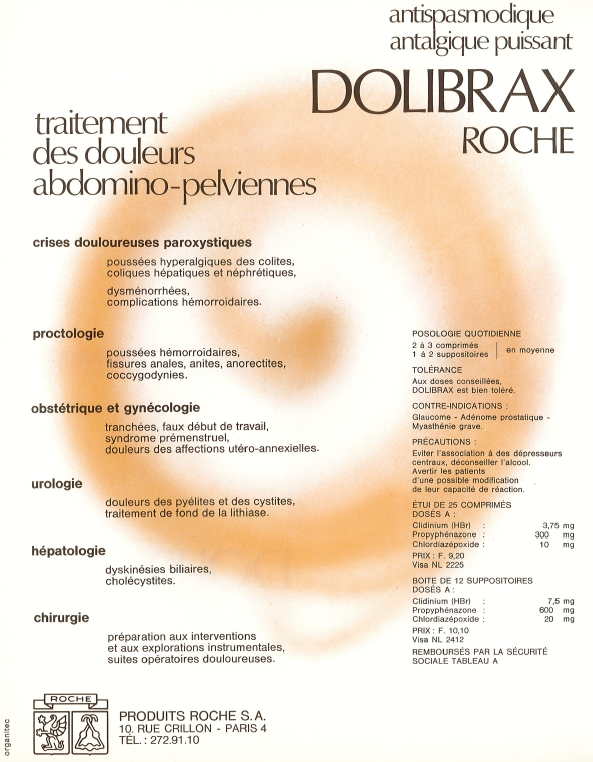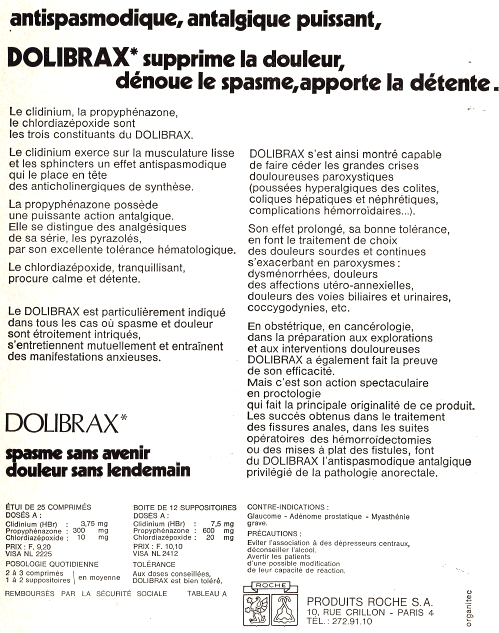Dolibrax combined antispasmodic and anxiolytic active principles. The formulation included the anxiolytic agent chlordiazepoxide (CDZ), which was the first benzodiazepine to have ever been synthesized, combined with the anticholinergic agent clidinium bromide (CDB, N-methyl-quinuclidinyl-benzylate) and the nonsteroidal anti-inflammatory drug (NSAID) propyphenazone (isopropyl phenazone). This antispasmodic and antalgic drug was used to treat a variety of painfull conditions in urology, hepatology, obstetric and gynecology, or after a colorectal surgery. The drug (oral tablets and suppositories) was largely used in the 1970s to treat diffuse abdominal pain.
CDZ has amnestic, anticonvulsant, anxiolytic, sedative, hypnotic, and skeletal muscle-relaxant properties because it inhibits monosynaptic and polysynaptic reflexes by acting as an inhibitory neural transmitter or by blocking excitatory synaptic transmission. CDB is a quaternary ammonium anticholinergic drug (muscarinic antagonist) with peripheral effects that may ease symptoms of cramping and abdominal stomach pain by decreasing stomach acid and slowing intestinal activity. Dolibrax is no longer used today but the combination clidinium/chlordiazepoxide (Librax) can be found in diverse pharmaceutical formulations, notably for the treatment of peptic ulcer, irritable bowel syndrome (IBS), and acute enterocolitis.






